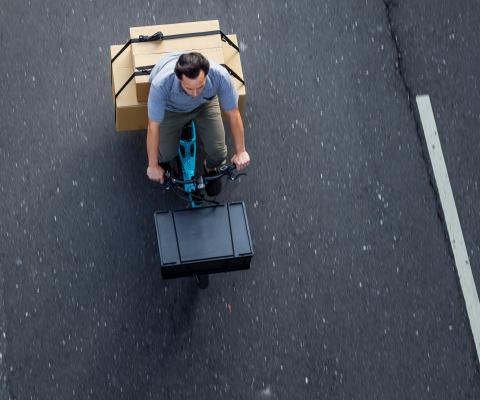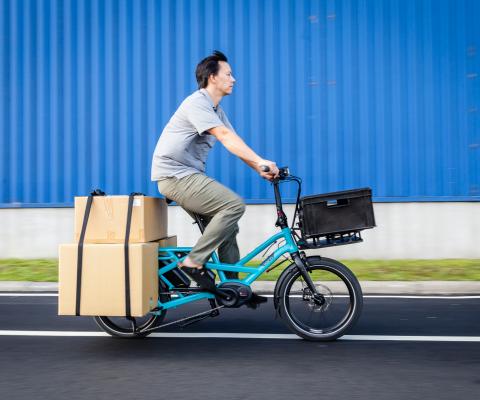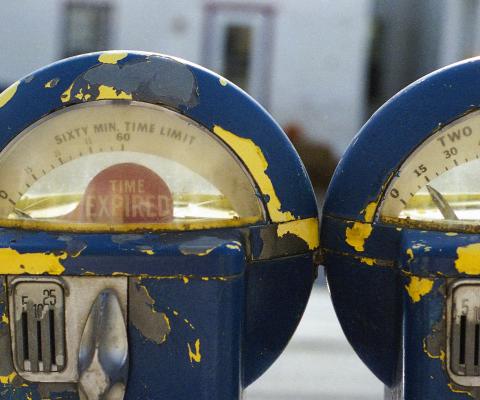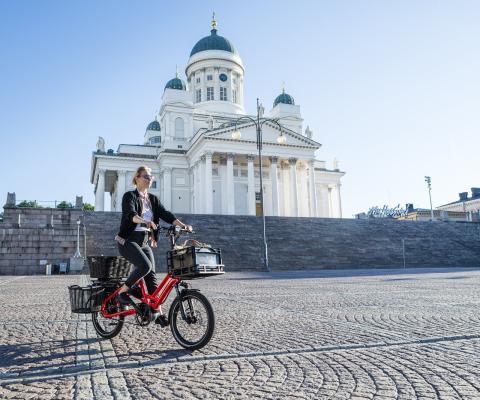If your business delivers food or goods sold online, you know it can be challenging to meet customers’ demands for fast, low-cost delivery.
But as transportation technology advances, new options for delivery vehicles stand to make the whole process less expensive, less time-consuming, and less of a headache.
E-bikes are one of these options, and they have enormous potential to help your business run smoothly and profitably. In fact, they just may be the ultimate delivery vehicles. Here are six reasons why:
1. Save 60% or More On Vehicle Costs
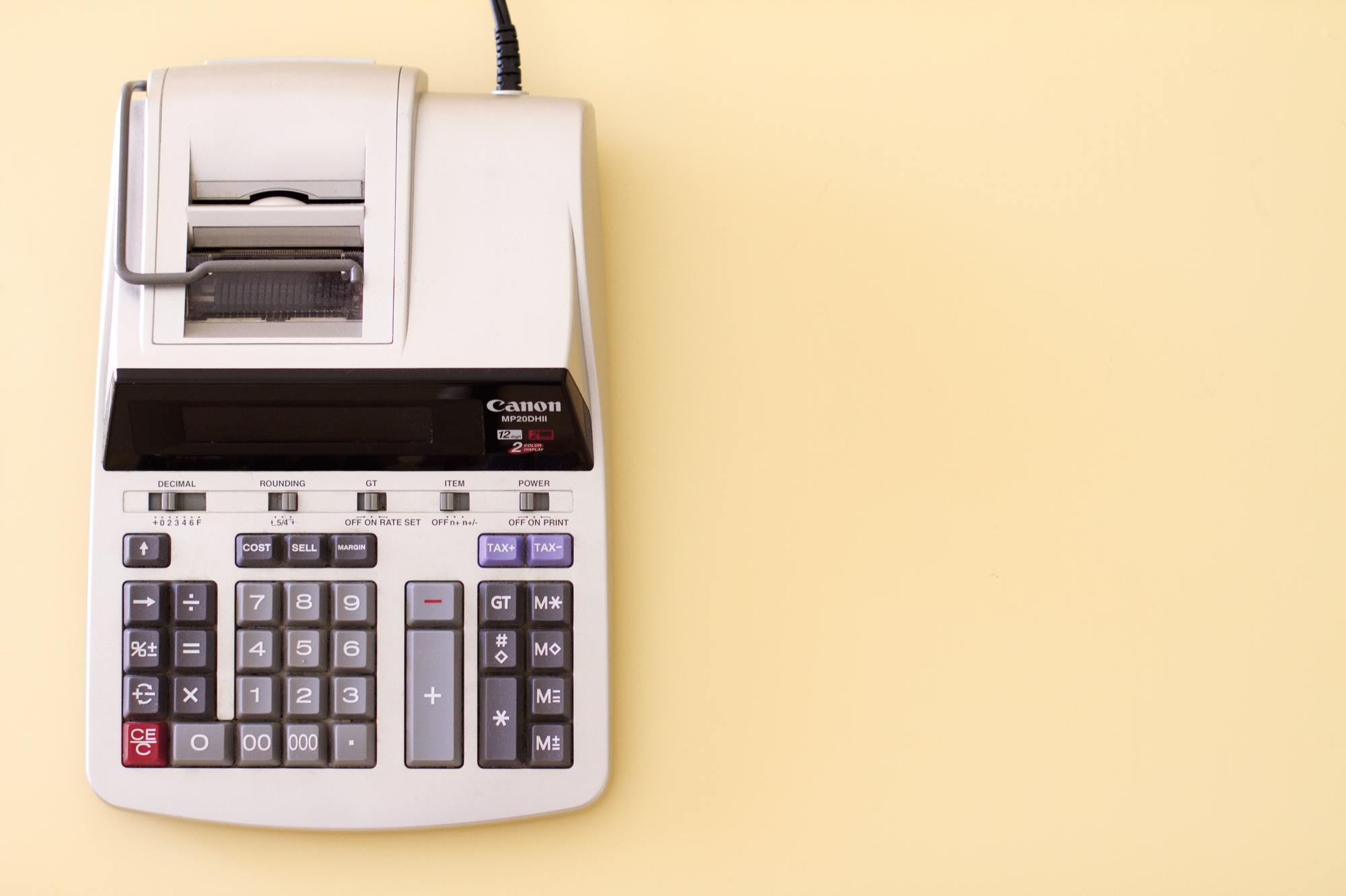
E-bikes are significantly cheaper to own and operate than scooters, cars, vans, and trucks. E-bike battery charging is incredibly cheap, so using e-bikes virtually eliminates fuel costs. Initial capital costs, storage, parking, insurance, and maintenance and repairs are also much cheaper for e-bikes.
How much money could you save? In the US, it costs businesses about 57.5 cents per mile to own and operate a car. Using e-bikes instead slashes that figure by at least 60%. For larger vehicles, the savings are even more dramatic.
2. Beat the Traffic for More Efficient Deliveries
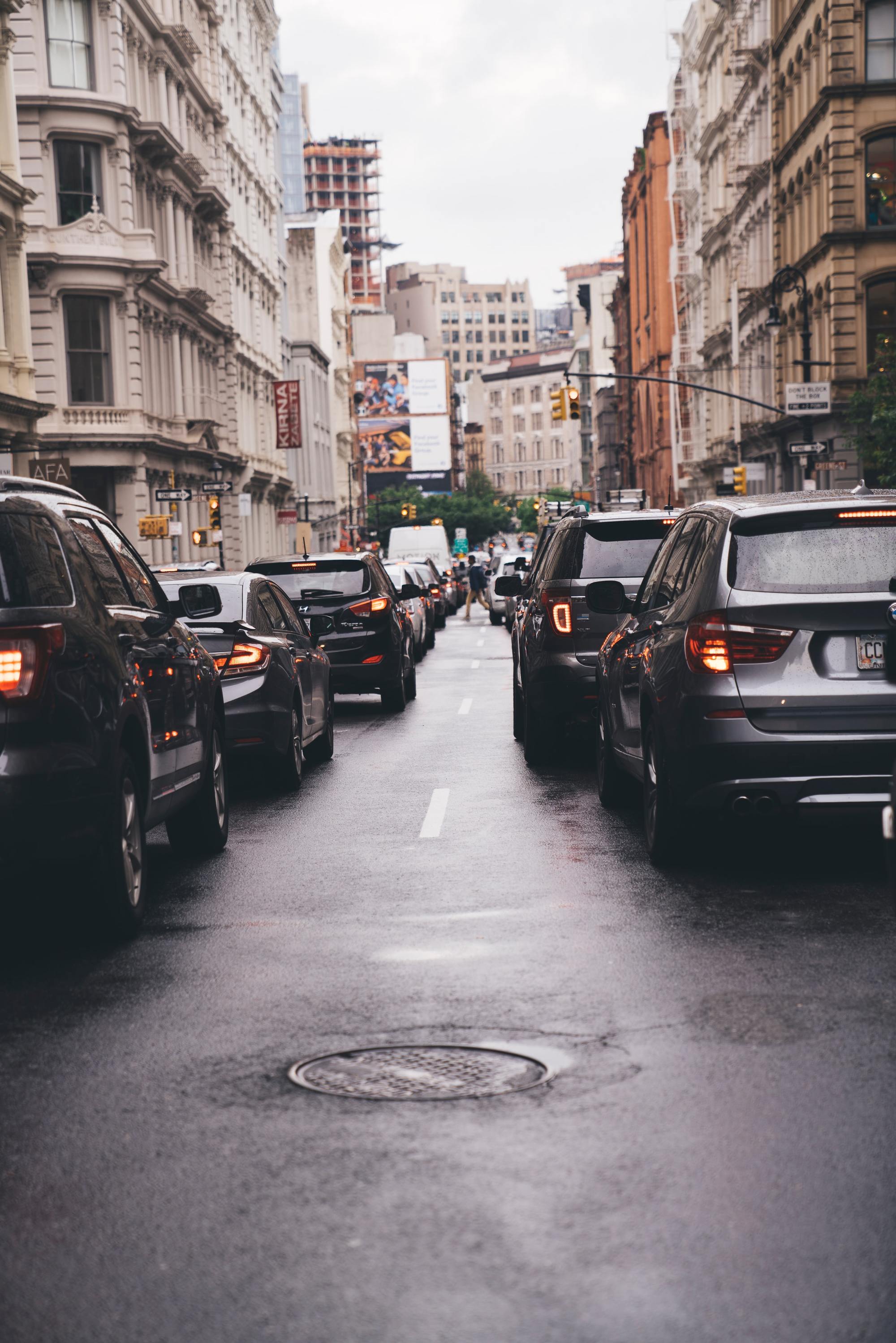
If there’s anything you can count on city-dwellers to complain about (other than the weather), it’s the traffic. Large, densely populated cities have always been notorious for gridlock and slow-moving streets.
But for businesses that need to get their goods into consumers’ homes efficiently, our overtaxed infrastructure is more than just a talking point—it’s a costly logistical problem.
As the volume of food and parcel deliveries increases worldwide, traffic congestion in big cities is only getting worse. And you’re probably all too aware that crowded city streets make deliveries take longer and cost more, eating into your bottom line.
E-bikes offer a way to beat the traffic. Delivery workers on e-bikes can bypass traffic jams and choose more efficient routes using bike lanes. This can often shave valuable minutes off of delivery time, decreasing costs and increasing customer satisfaction.
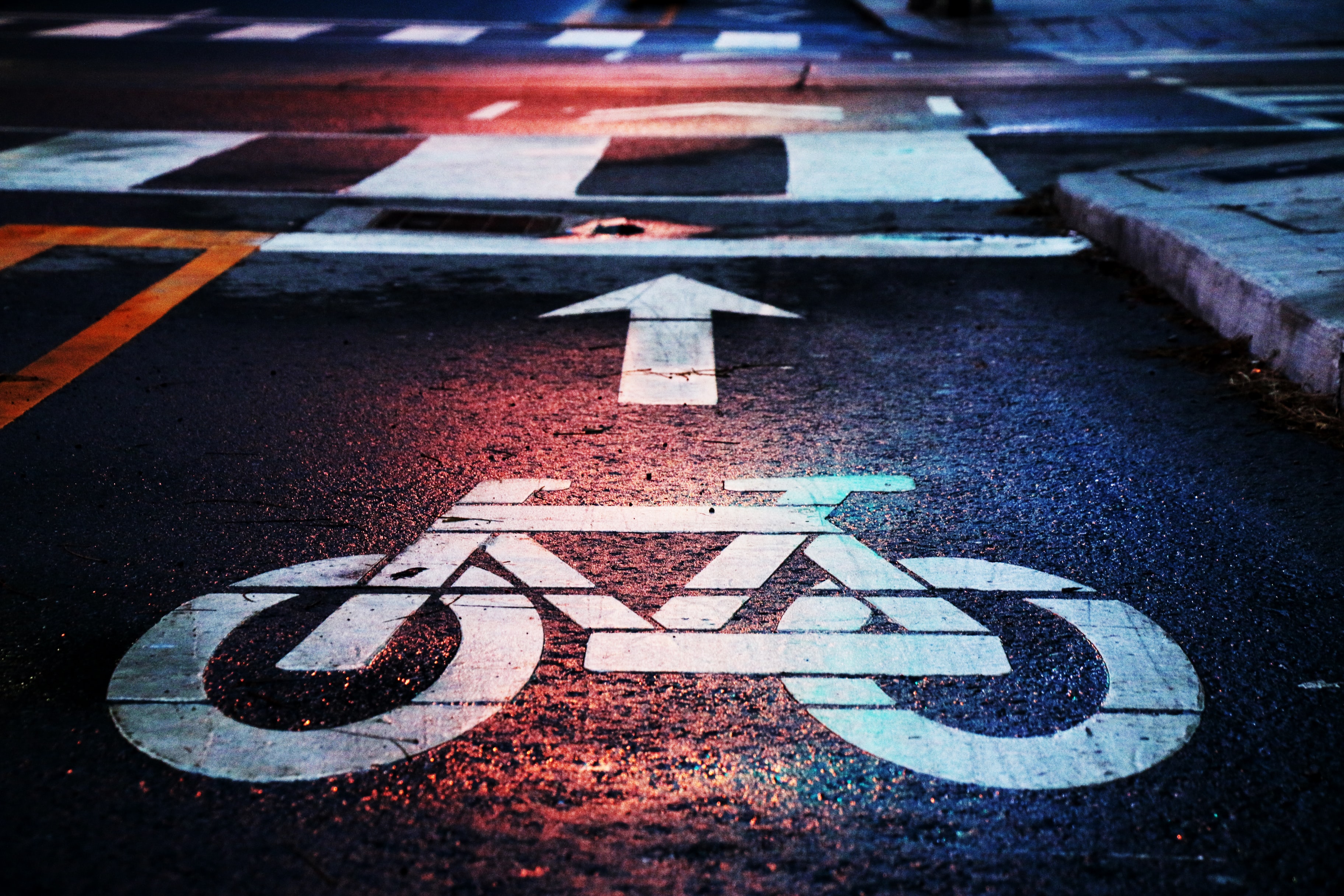
Research has shown that e-cargo bikes are more cost-efficient than trucks when the distribution center is within two miles of the delivery neighborhood (which is often the case in big cities).
And when one logistics company trialed using e-cargo bikes as delivery vehicles in Bergen, Norway, they experienced a 40% boost in productivity compared to using trucks. Interestingly, Bergen was chosen because of its lack of bicycle infrastructure—so even if the city where you operate isn't bike-friendly, e-bikes can still work for you.
3. Go Where Larger Vehicles Can’t

A big reason why e-bikes are more cost-efficient over short distances in urban areas is that 25-50% of delivery costs come from what’s known as the final 50 feet.
In big cities, cars, vans, and trucks can’t drive right up to a residential building and park there. Instead, the driver must search for parking (or face a fine) and navigate across traffic, bike lanes, and sidewalks to get close to where the customer is waiting. The final 50 feet can cause significant delays, especially when delivering to buildings located on narrow streets with limited parking.
E-bikes allow delivery workers to maneuver right up to their destination, quickly handoff the goods and get moving again with minimal downtime.
4. No Parking Restrictions
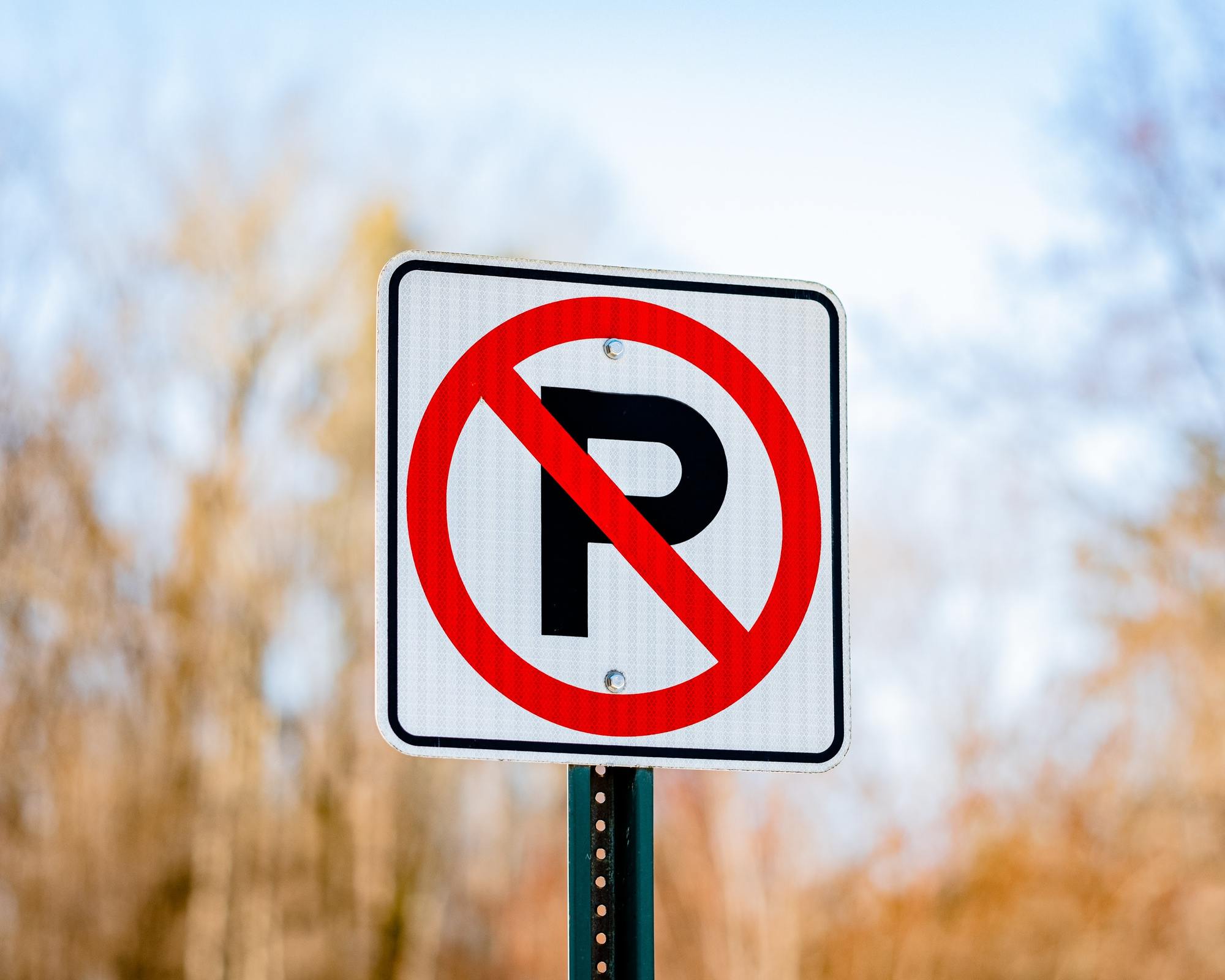
E-bikes also hold a serious advantage when it comes to parking. Even maneuverable small vehicles like mopeds face significantly more parking restrictions than bikes.
That’s a big deal because illegally parked delivery vehicles can incur hefty fines. In 2018, New York City issued more than half a million summonses and $27 million in fines for just four big delivery companies.
And searching for legal parking incurs costs of its own, in the form of idling and circling time. Idling and circling also negatively impact the local air quality and the usability of city streets, which can create ill-will among your target customers.
Using e-bikes for deliveries means your delivery workers will spend less time hunting for parking. At the same time, your business will develop a reputation for clean, sustainable practices.
5. No License Necessary
Your delivery workers won't need a license to operate an e-bike. That means you'll have a larger pool of candidates to choose from when hiring.
And in most localities, there's no need to pay a registration fee for an e-bike, either.
6. More Cargo Capacity than You Think
If you're worried that e-bikes can't handle the amount or kind of cargo you need to deliver—don't be. Just make sure to choose an e-bike with the cargo capacity you need.
Need to carry extra-heavy loads? The Tern GSD has a burly integrated rear rack and a maximum gross vehicle weight of 200 kg (440 lb). You can extend the GSD's capabilities even further by pairing it with the heavy-duty Carla Cargo trailer. This creates a modular cargo solution that can haul up to 318 kg (700 lb) of goods through narrow alleys, traffic jams, and other places cars can't reach.
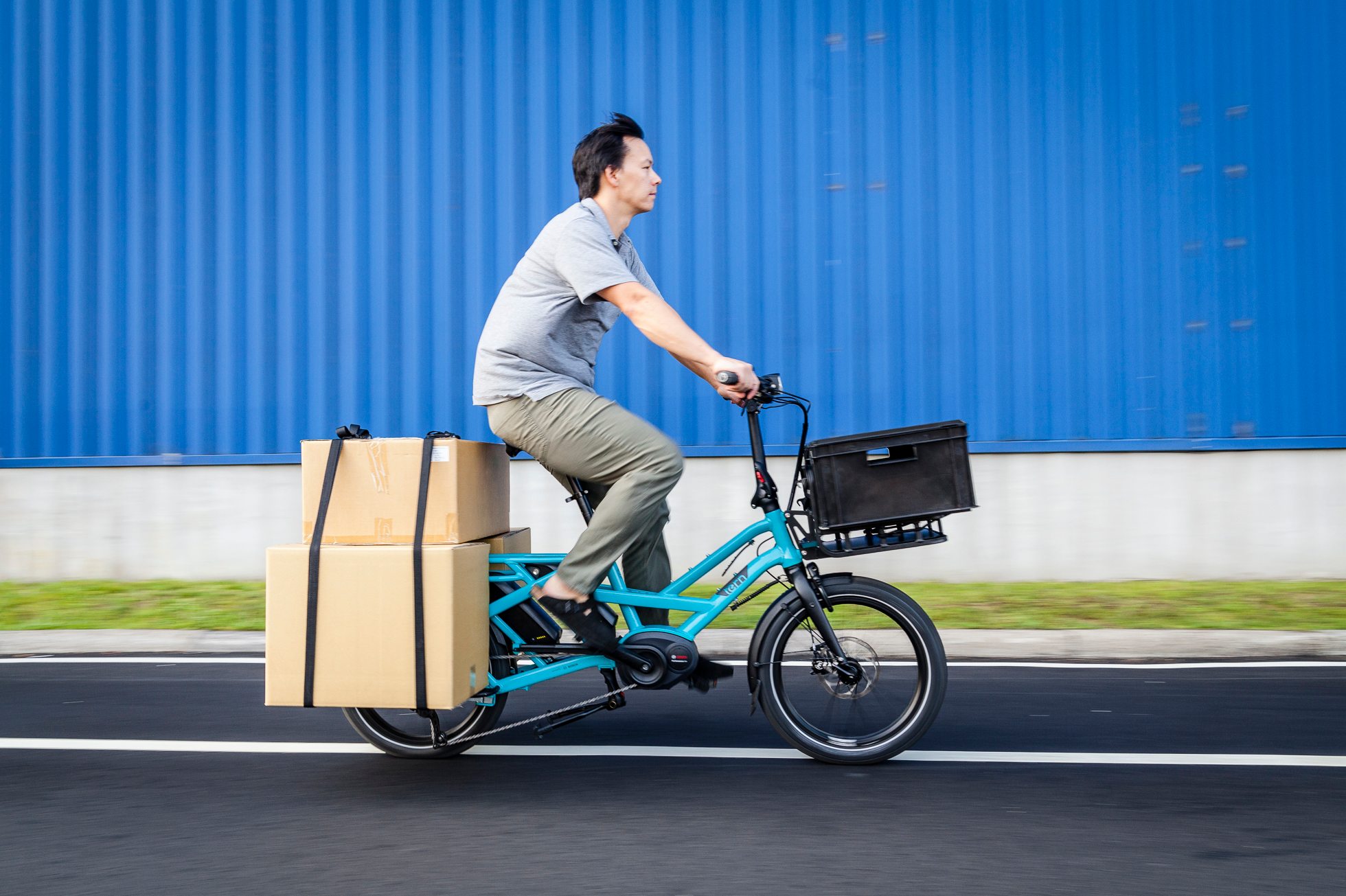
There's almost nothing the right e-bike can't help you deliver faster, more easily, and at a lower cost. Adopting e-bikes as delivery vehicles is a smart business decision that's sure to pay off for years to come.
Interested in learning how businesses like yours can benefit from e-bikes? Get in touch.




